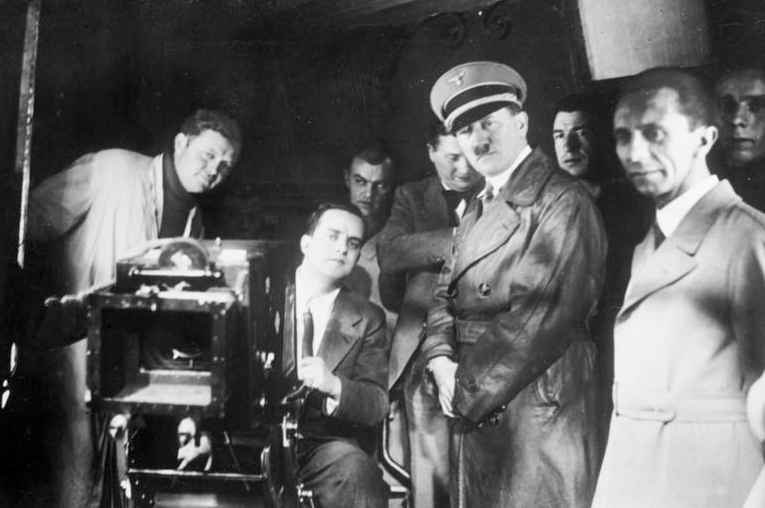Adolf Hitler liked to watch movies. During his ascension in the ’30s and then during the war, the first of many terrestrial conflicts to be fully reflected back onto itself from the world’s movie screens, Hitler became a full-fledged cinephile, a man who communicated with the dream-reality he himself was forging across the Eastern Hemisphere through the cinematic apparatus. Amid the almost 7.5 hours of Hans-Jürgen Syberberg’s grandiloquent yet threadbare experimental documentary Hitler: A Film from Germany (1977), it is pointed out that during the war Hitler never once journeyed to the front, and saw the war only on nightly newsreels in the various Führerhauptquartieres, from the Wolf’s Lair in East Prussia to the final Führerbunker, nestled in his private screening rooms, gleaning the “reality” of the war he was orchestrating from movie images. Susan Sontag, writing about the Syberberg, called the resulting historical aggregate of power, atrocity, politics, celluloid, and inherited cinematic ideas “Germany, a Film by Hitler.”
Indeed, Syberberg’s monologue has Hitler declaring himself, at least to himself, “the greatest filmmaker of all time.” You see the poststructuralist sinkhole of reason sitting there, the tar baby of simulacral reflections, but we’re not approaching it just yet. Instead, let’s consider first the simple fact that very few, if any, world leaders visited “the front” at any time during either world war, and that they all watched newsreels and movies regularly; that Joseph Stalin was such an avid moviegoer that he kept the same faithful Kremlin projectionist, Alexander Ganshin, on the job for eighteen years, until the dictator’s death, an achievement in survival under Stalin so remarkable that Ganshin became the subject of a 1991 film by Andrey Konchalovskiy, The Inner Circle; that Mao Zedong became, in his cataract-ridden later years, a huge Bruce Lee enthusiast; that Benito Mussolini loved the notorious Hedy Lamarr debut Extase (1933) so much he reputedly owned his own print; that FDR watched three movies a week, corresponded with Myrna Loy, and personally converted an East Wing room in the White House into a screening room. And, of course, Woodrow Wilson, leading up to America’s entry into World War I, was sufficiently impressed by Griffith’s The Birth of a Nation (1915) to have pronounced that it was “like writing history with lightning,” a statement that (if true) suggests a warped relationship between power and cinema, between realpolitik and the edifice of simulacra, that staggers the imagination and darkens the heart.
The viral sorcery of cinema is such that it took almost no time at all for the new medium to change its viewers, to electrify their expectations and their attention spans, to mythify violence and beauty...
You have reached your article limit
Sign up for a digital subscription and continue reading all new issues, plus our entire archives, for just $1.50/month.
Already a subscriber? Sign in





